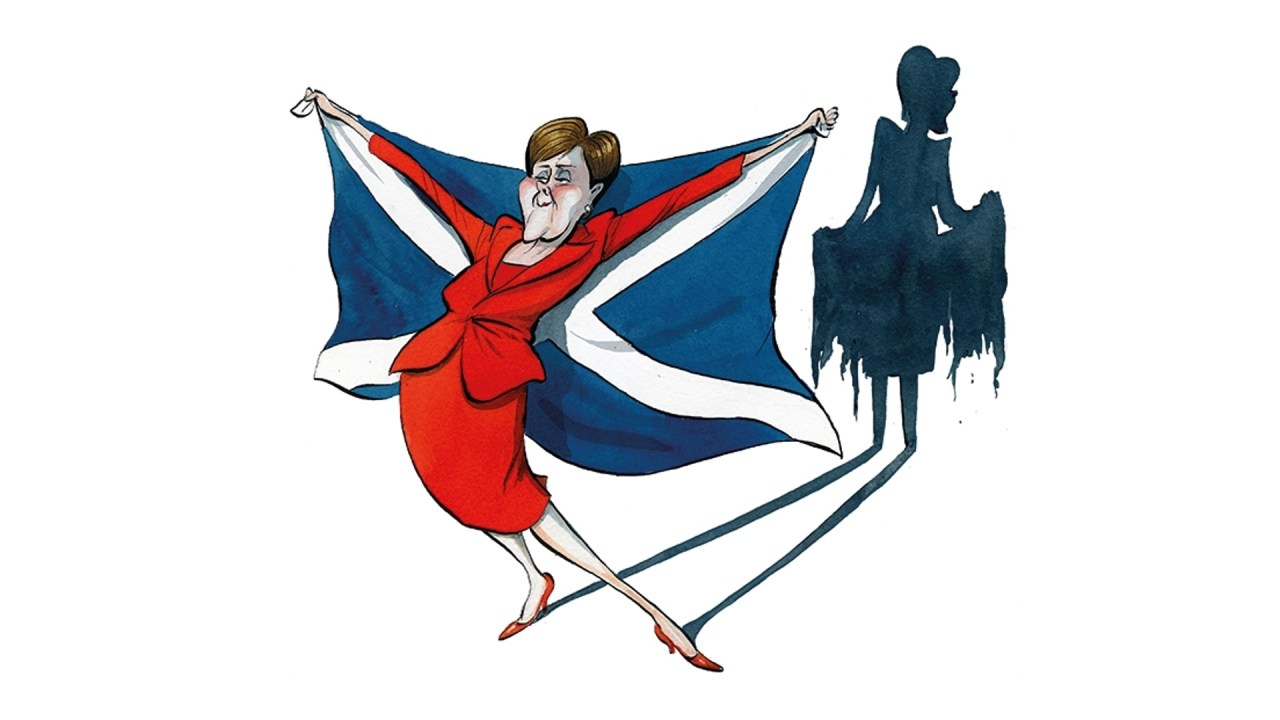A newly independent Scottish state would have to implement eye watering spending cuts or tax increases to stay afloat, according to new analysis.
If the new state were to balance the books using tax increases alone then Scotland’s three income tax bands, which are broadly equivalent to the basic rate in the rest of the UK, would have to go up by 26 pence in the pound, taking Scotland’s basic rate to 46 pence. Alternatively, the gap could be filled by raising VAT from 20 per cent to 49 per cent. Such massive tax rises would represent at least 10 per cent of Scotland’s GDP.
The analysis comes from a report by libertarian-leaning campaign group the TaxPayers’ Alliance (TPA), and was written by TPA chairman and ex-Treasury economist Mike Denham. It finds that Scotland’s fiscal deficit last year, at 8.6 per cent of GDP, was 14 times the euro area average and higher than any of the OECD’s 37 member countries. The report states an independent Scotland could attempt to fund its deficit by borrowing but that there would be cost and capacity constraints, while any workable independence agreement with the UK would require Scotland carry its share of existing UK government debt obligations.
The Growth Commission report’s authors started with a conclusion – radical separation – then worked backwards to make their case
Scotland’s share of the UK’s liabilities is currently estimated by the TPA at around £300 billion (including borrowing and a share of the UK’s unfunded public sector pension liability), or roughly twice the size of Scotland’s GDP.
‘An independent Scotland would enter the international financial markets as an already heavily indebted, small, and untested sovereign borrower, issuing debt in a currency it did not itself control,’ says the report, warning that interest rates on Scottish debt would be considerably higher than for equivalent UK sovereign bonds, and that debt markets would ‘demand a robust fiscal consolidation plan, backed by an immediate and credible demonstration of intent, with significant spending cuts and/or tax increases’.
The report goes on to say, unsurprisingly, that experience from fiscal consolidations globally suggests spending cuts are less harmful to growth than tax increases, and that debt market confidence is more likely to be gained by implementing the former. However, the current Scottish government’s preference for ‘Scandinavian levels’ of social spending would likely mean an emphasis on tax rises.
The report is critical of the SNP’s Sustainable Growth Commission, which published a lengthy paper in 2018 designed to provide a credible economic blueprint for separation. The Growth Commission advocates using the British pound unofficially outside the formal sterling zone, but the TPA report says the SNP has ‘not explained how it would deal with the limitations that imposes’. It would mean Scotland could not conduct its own quantitative easing programme, for example.
The report also takes a dim view of SNP assumptions around any future asset and debt liability split. Total UK public assets are valued at over £2 trillion. The new Scottish state would aim to secure a share of that and would need to negotiate the handover of certain assets, such as the Scottish rail network (owned by Network Rail) critical to the functioning of the country. But this does not square with the Growth Commission’s argument that Scotland would have ‘no obligation’ to take an effective share of the UK’s debt.
The Commission subsumed Scotland’s debt obligation to the UK into a proposed annual payment it labelled an ‘Annual Solidarity Payment’, which included several elements including a joint programme of foreign aid. The TPA report suggests this is a sleight of hand designed to signal to markets a cooperative exchange rather than a debt obligation, while capital repayments are omitted altogether.
‘Scotland would almost certainly end up with a debt obligation to the UK. And the financial markets would interpret it that way,’ says the report, adding that when push comes to shove the new state would probably start with a debt-to-GDP ratio of over 100 per cent.
This is not the first criticism of the Growth Commission. Indeed, a faction within the SNP is campaigning for it to be binned and replaced with an even more radical plan involving a new currency.
The Growth Commission report’s sub-title is the lofty: A strategy for inter-generational economic renaissance. A nice line aimed at suggesting an open-minded pursuit of a better Scotland. The reality of course is that the authors started with a conclusion – radical separation – then worked backwards to make their case.
It is no surprise then to find the SNP’s proposals full of holes.








Comments